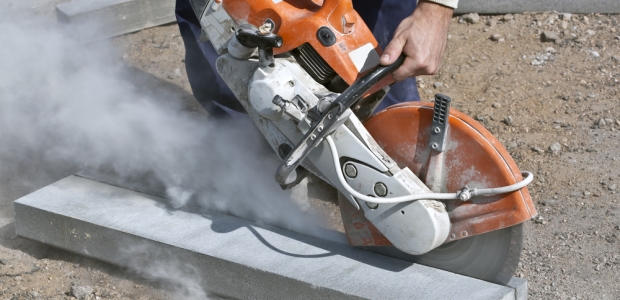
OSHA Begins Long Silica Public Hearing
NIOSH published "Criteria for a Recommended Standard: Occupational Exposure to Crystalline Silica" in 1974, recommending there that same exposure limit OSHA has proposed -- 50 micrograms per cubic meter (μg/m3).
OSHA began three weeks of "an intensive three weeks of public comment" about its pending notice of proposed rulemaking about occupational exposures to crystalline silica in Washington, D.C., on March 18. NIOSH researchers testified on day one, with Dr. Paul Schulte, director of NIOSH's Education and Information Division, heading a panel of NIOSH researchers who have expertise on respirable crystalline silica exposures and health effects. The proposed rule, published in September 2013, would set new permissible exposure limits for respirable crystalline silica, and hundreds of comments for and against those proposed changes already have been submitted to the rulemaking docket.
Silica exposure can cause silicosis, lung cancer, pulmonary tuberculosis, airways diseases, and autoimmune disorders, according to NIOSH, which published "Criteria for a Recommended Standard: Occupational Exposure to Crystalline Silica" in 1974, recommending there that the exposure limit be reduced to 50 micrograms per cubic meter (μg/m3). This is the level indicated in OSHA's proposed rule.
But opponents say the existing PEL is sufficiently protective if employers adhere to it and OSHA enforces compliance with it. They say silicosis cases in the United States already have been significantly reduced, and a lower PEL is unnecessary and expensive.
NIOSH research on silica dust visit is available here.
OSHA's public hearings for the NPRM will continue through Friday, April 4. "We look forward to receiving feedback from our stakeholders on our proposal, and we're grateful for the continuing high level of public engagement throughout the rulemaking," said Assistant Secretary of Labor for Occupational Safety and Health Dr. David Michaels. "This is an open process, and the input we receive will help us ensure that a final rule adequately protects workers, is feasible for employers, and is based on the best available evidence."
An AIHA representative testified in support of the proposed rule on March 20. "Ultimately, the question is, 'will this proposal result in improved employee health and safety?' AIHA answers a resounding 'yes' and supports OSHA's efforts to move forward with the proposed rule that helps to protect worker health and reduce illnesses related to silica exposures," said AIHA Vice President Daniel H. Anna, Ph.D., CIH, CSP, who testified on behalf of the association. He summarized comments on several aspects of the proposed regulation that AIHA submitted to the docket in February, in which AIHA took the position that in order to properly protect workers, the proposed PEL for silica should be based on scientific evidence and health effects as established by NIOSH and American Conference of Governmental Industrial Hygienists documents, which conclude that the current PEL is inadequate.
To view the hearing schedule, visit this page.